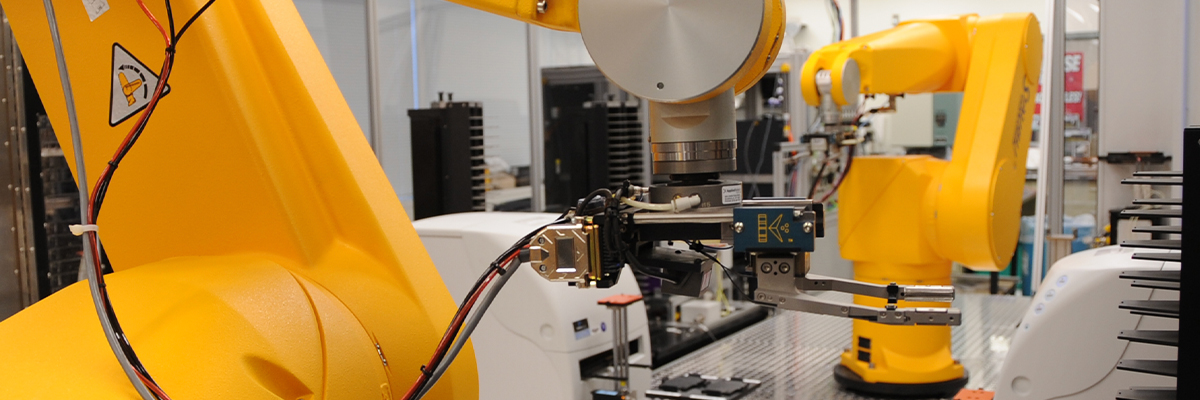Trans-IRP Research Resources

For more than 100 years, the NIH Intramural Research Program (IRP) has attracted huge numbers of scientists with world-renowned expertise and a passion for improving human health. However, the kinds of game-changing discoveries made in the IRP require more than just scientific talent. Whether they are working on life-saving personalized cancer treatments or new vaccines to combat deadly infectious diseases, researchers need access to cutting-edge technologies that allow them to investigate the mysteries of biology.
For this reason, the IRP maintains a vast collection of research resources that can be utilized by any investigator at NIH. From advanced microscopes for producing detailed images of the tiniest components of our bodies to the latest genetic technologies for precisely manipulating DNA, IRP researchers have access to any tool they may need to support their work. The shared nature of these resources facilitates the kind of collaboration across research disciplines that enables researchers in the IRP to answer biomedical questions that no individual or lab could solve alone.
Advanced Imaging and Microscopy (AIM) Resource
The Advanced Imaging & Microscopy (AIM) Resource operates, disseminates, and improves next generation, prototype optical imaging systems and provides support for advanced image processing.
Biomedical Engineering and Physical Science (BEPS)
Biomedical Engineering and Physical Science (BEPS) gives IRP investigators access to specialized techniques, including microfabrication, electron microscopy, AFM, MALDI-TOF imaging, ICP-OES, and AUC.
Chemistry and Synthesis Center (CSC)
The Chemistry and Synthesis Center (CSC) provides chemical tools for biological research. Any type of composition may be prepared, including small molecules, peptides, proteins, diverse nano-materials. A variety of reporters can be attached, from fluorescent to MRI, PET and SPECT radiolabels (non-GMP material, not commercially available only).
Collaborative Research Exchange (CREx)
The NIH Collaborative Research Exchange (CREx) connects IRP investigators with research resources offered by NIH Cores, collaborative facilities, and external vendors.
Functional Genomics Lab (FGL)
The Functional Genomics Laboratory (FGL), is a shared intramural resource with the mission of conducting high-throughput functional genomic screening projects (RNAi, CRISPR and chemogenomics), with investigators in the NIH intramural program.
High Performance Computing (HPC)
The NIH Biowulf supercomputer enables scientists to analyze massive datasets and tackle computational projects whose sheer scale would make them otherwise impossible.
Instrumentation Development and Engineering Application Solutions (IDEAS)
The IDEAS resource provides the IRP with electrical, electronic, electro-optical, biomedical, mechanical, and software engineering development of novel systems, instrumentation, and methodologies for basic and clinical research.
NCI Cryo Electron Microscopy / IRP CryoEM Consortium (NICE)
NIH Intramural CryoEM Consortium (NICE) provides access to a state-of-the-art cryo-electron microscopes for atomic-resolution structure determination using single particle or cryo-tomography methods.
NIH MRI Research Facility (NMRF)
The NIH MRI Research Facility (NMRF) is a shared, intramural resource for state-of-the-art human MRI research. NMRF resources include an FDA approved 7.0 T human MRI scanner which is accessible to any NIH investigator. [NIH Only]
NIH Mouse Imaging Facility (MIF)
The Mouse Imaging Facility (MIF) is a shared, intramural resource for state-of-the-art animal imaging studies. Resources include MRI, microCT, DXA, ultrasound, photoacoustic, and optical imaging. [NIH Only]
Positron Emission Tomography (PET)
The PET Department supports clinical research using PET, with a vertically integrated facility to produce positron-emitting radionuclides, manufacture PET radiopharmaceuticals in a GMP facility, and image CC patients with PET/CT and PET/MR.
This page was last updated on Monday, December 9, 2024